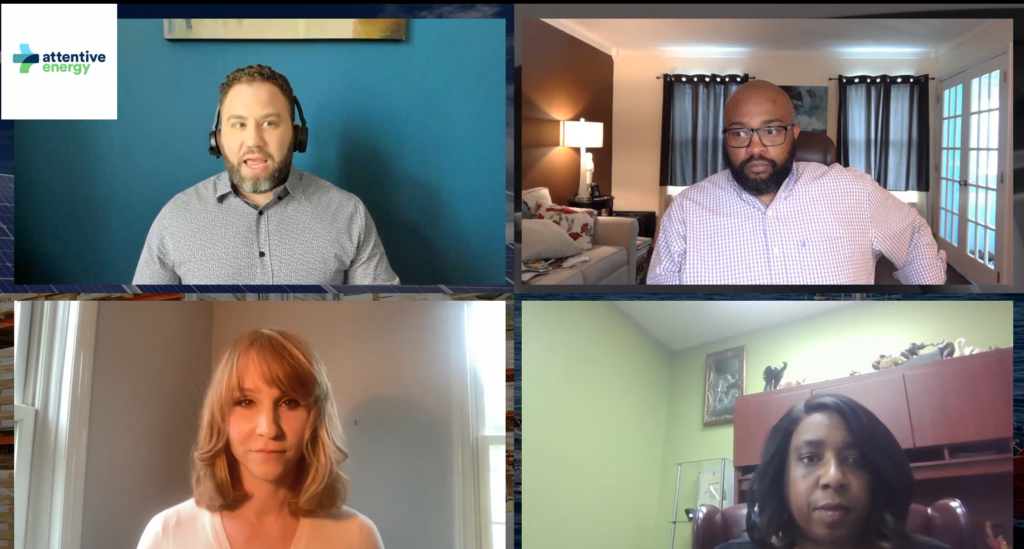This week Attentive Energy, in partnership with the National Supplier Diversity Institute, hosted the first Economics X Energy 40: Offshore Wind Supplier Diversity Series. The event aimed to educate New Jersey’s small and diverse businesses on the offshore wind industry’s development timelines and the opportunities for them to enter the different phases of the local supply chain.
I was joined on the panel by Monica St. Claire, CEO of US Offshore, and Deidre Helberg, CEO of Helberg Electrical Supply and Founder & President of the US Coalition of Black Women Businesses, we spoke to a variety of small, diverse businesses and local stakeholders about the offshore wind development timeline and provided guidance for small businesses in navigating what can be a complex supply chain.
It was refreshing to hear the experiences of local woman-owned businesses who have found early success in the market. A key point of emphasis was that business owners need to know their market. Market research is a constant effort, and networking makes a huge difference in finding the right opportunity and the right partner. But this all begins with knowing your businesses value proposition and how those offerings fit within the multiple supply chains that create offshore wind.
The challenge for many small businesses in understanding their value proposition is getting the right information. There is a responsibility among the experienced players in the market, particularly with the developers and offshore wind component manufacturers, to be transparent about their needs and when they require various goods and services. Answering the “when” in this equation is fully dependent upon where in the development process a project has progressed. The development timeline of a US offshore wind project has many milestones that must be accomplished before shovels finally hit the dirt. From the developer’s perspective, obtaining a federal offshore lease area is the first step in a multi-year process and is mapped out in a potential timeline below. This only covers the federal milestones. At a state level, a developer also needs to acquire an offtake agreement with a state who wants to buy offshore wind energy. This process takes place in parallel to the federal permitting process but a commercial case to construct a project cannot begin unless both a federal permit to build and an agreement to sell the energy are obtained.

This phased approach to development highlights the need to understand what types of goods and services are needed during pre-construction, construction, and post-construction. For each type of contract, the buyer will have vastly different needs. For goods, those needs can either be off-the-shelf or bespoke products. For services, they can be general contracting or highly specialized. America has always and continues to do power generation. That’s what offshore wind is at its core – a power generation supply chain. Think about how power is transmitted and what equipment and material is needed to make that happen with the added nuance of the source of power coming from the sea to a substation on land.
On a basic level, the following breakdown provides a clear starting point:
- Pre-Construction is associated with site assessment and characterization, permitting, engineering and design, and bid development.
- Construction is associated with the physical goods, services, and workforce associated with the manufacturing, installation, and commissioning of all systems of the wind farm such as the wind turbine, foundations, and transmission systems which cover both the onshore and offshore environment.
- Post-Construction is associated with the physical goods, services, and workforce associated with operating and maintaining all systems of the wind farm.
- Throughout all phases of development, there will be general business needs such as office management, facilities management, legal, HR, accounting, marketing, IT, etc. which exist regardless of the offshore wind timeline.

The Economics X Energy 40 event concluded with a matchmaking charrette in Elizabeth, NJ at the conclusion of the panel discussion. The importance of events like this is to highlight the opportunities that are out in the market and provide guidance towards creating a successful bid. Only through early engagement can small, diverse businesses and local non-profits maximize economic opportunities within the offshore wind industry.
Attentive Energy’s mission is to center communities in everything that we do, on and off the coast. This event is one in a series of early engagements that our team has implemented to ensure that our current and future community partners have the knowledge and capacity to proactively engage with the offshore wind industry.
Our team is in the process of surveying NJ’s small/diverse businesses and nonprofits to better understand how we can design a project that creates intentional opportunities for businesses of all sizes in the supply chain. Take the survey today here: Business Survey & Support Grants (businesssurveygrants.com)



